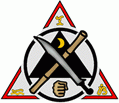Cage Fury 4
Great weekend in Atlantic City and Springfield, Mass. The team did outstandingly well in the cage over the weekend. All the guys did really well, showed great skill, demonstrated excellence on the ground, the clinch, while striking, tactically and in spirit. Team BombSquad 5 and 3 for the weekend with strength and diligence shown by … Read more
